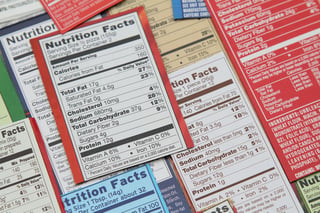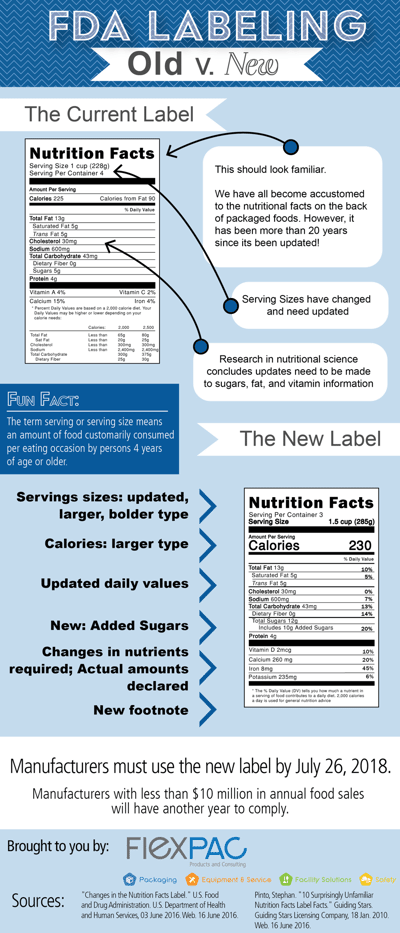 Over the past month, you may have heard about the Food and Drug Administration (FDA) finalizing the new nutrition facts labeling laws for packaged food. Why would they update labeling? First, the label hasn’t been updated in more than 20 years. Just a quick comparison and to make you feel really old – that’s around the time that Amazon sold its first book.
Over the past month, you may have heard about the Food and Drug Administration (FDA) finalizing the new nutrition facts labeling laws for packaged food. Why would they update labeling? First, the label hasn’t been updated in more than 20 years. Just a quick comparison and to make you feel really old – that’s around the time that Amazon sold its first book.
The FDA is changing the label based on updated scientific information, which involves new nutrition and public health research. In short, the new label needs to help current consumers make a more informed decision about the food they buy and eat.
The label is changing, and will be required on all food packaging. If you have any questions concerning the new FDA labeling requirements, contact a package deisgn company such as FlexPAC.

Old vs. New Label
There are some critical changes that the FDA is requiring now for food labels. They the main changes, as seen in the infographic, are as follows:
1. Refreshed Design
2. Updated information about Nutrition Science
a. “Added sugars” in grams and percent Daily Value
b. Vitamin D, Potassium, Iron, and Calcium are required. Vitamins A and C are no longer required on the label.
c. “Total Fat”, “Saturated Fat”, and “Trans Fat”. “Calories from Fat” will be removed
3. Updated Serving Sizes and Labeling Requirements for Certain Package Sizes
a. Serving sizes must be based on amounts of foods and beverages that people are actually eating – not what you should be eating. The FDA is updating it from requirements that came out in 1993.
b. Products that can be consumed in one sitting, but are larger than one serving size must include a “dual-column” to indicate the “per package” amount of calories. Examples include a pint of ice cream or 24 oz. bottle of soda.
If you have any questions about the label and the changes in the nutritional requirements, look here at Changes to the Nutrition Facts Label on the FDA website.
What this means for you:
Now, it is necessary to update a food label that hasn’t been changed in 20 years. The FDA is requiring all manufacturers to make these changes by July 26th, 2018. Manufacturers making less than $10 million in annual food sales are a bit luckier and will have an additional year to make the changes required.
This is still a huge change for many companies, and some are saying the time frame is not feasible. According to Food Navigator USA, Brendon Cull, Kroger’s Senior Director, does not think this is enough time for the industry to adjust. The changes would cost Kroger an extra $40 million, because of the time limit and the amount of labels they would have to update. Prices would increase, due to the manufacturing costs alone. However, the two-year compliance policy still stands for such large companies with the resources to make those changes.


 Over the past month, you may have heard about the Food and Drug Administration (FDA) finalizing the new nutrition facts
Over the past month, you may have heard about the Food and Drug Administration (FDA) finalizing the new nutrition facts 
.png?width=480&height=252&name=PRESS%20RELEASE-2%20(4).png)

